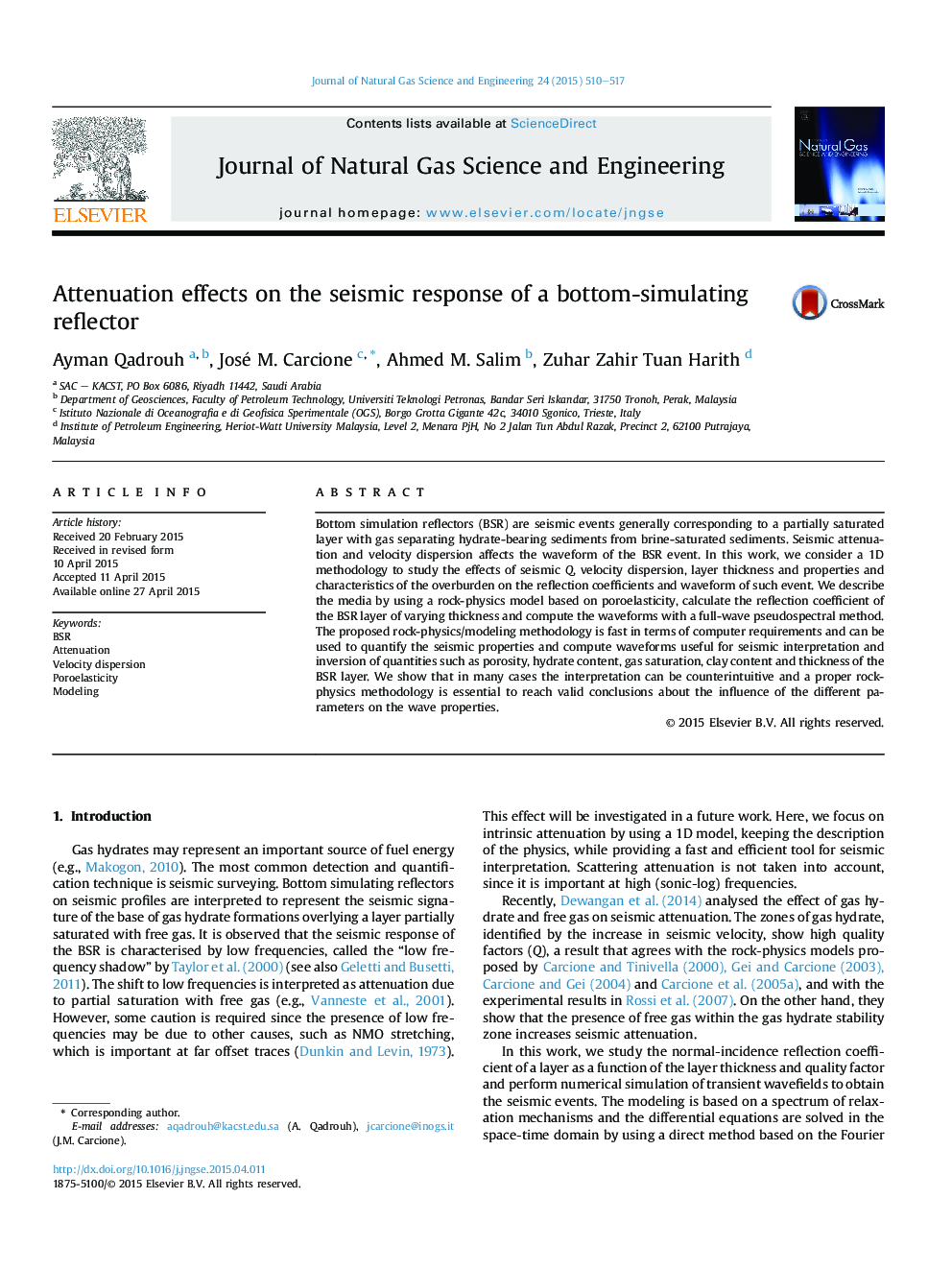| Article ID | Journal | Published Year | Pages | File Type |
|---|---|---|---|---|
| 1757443 | Journal of Natural Gas Science and Engineering | 2015 | 8 Pages |
•We analyze the seismic response of Bottom simulation reflectors (BSR).•Seismic attenuation and velocity dispersion affects the waveform of the BSR event.•We show that in many cases the interpretation can be counterintuitive.•The methodology includes the effects of porosity, hydrate content, gas saturation, and thickness of the BSR layer.
Bottom simulation reflectors (BSR) are seismic events generally corresponding to a partially saturated layer with gas separating hydrate-bearing sediments from brine-saturated sediments. Seismic attenuation and velocity dispersion affects the waveform of the BSR event. In this work, we consider a 1D methodology to study the effects of seismic Q, velocity dispersion, layer thickness and properties and characteristics of the overburden on the reflection coefficients and waveform of such event. We describe the media by using a rock-physics model based on poroelasticity, calculate the reflection coefficient of the BSR layer of varying thickness and compute the waveforms with a full-wave pseudospectral method. The proposed rock-physics/modeling methodology is fast in terms of computer requirements and can be used to quantify the seismic properties and compute waveforms useful for seismic interpretation and inversion of quantities such as porosity, hydrate content, gas saturation, clay content and thickness of the BSR layer. We show that in many cases the interpretation can be counterintuitive and a proper rock-physics methodology is essential to reach valid conclusions about the influence of the different parameters on the wave properties.
